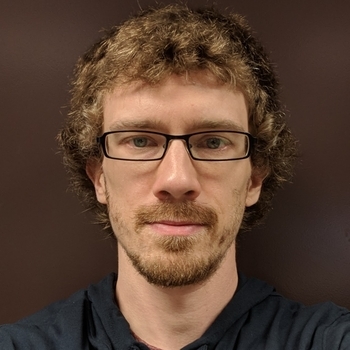
Jonathan Sukovich Is Honored with Kenneth M. Reese Research Scientist Award
This honor is given to non-tenure-track faculty who have demonstrated sustained excellence in research and related scholarly activities.

This honor is given to non-tenure-track faculty who have demonstrated sustained excellence in research and related scholarly activities.
Congratulations to Jonathan Sukovich, U-M BME Associate Research Scientist, for receiving the Kenneth M. Reese Outstanding Research Scientist Award. This honor is given to non-tenure-track faculty who have demonstrated sustained excellence in research and related scholarly activities.
“It was exciting to hear that I won the award, and it was an honor to be nominated,” Sukovich said. “I’ve been very happy to do the work that I’m doing, which is making a difference. I like to think that other people are excited about it, too.”
Sukovich cited some projects he has recently worked on that he thinks are particularly inspiring. “The one that has been part of the big push of my work lately has been the development of the control systems that enable the precise delivery of histotripsy treatments, as well as of the systems that enable us to do histotripsy monitoring,” he said. Pioneered at U-M, histotripsy offers a promising alternative to cancer treatments such as surgery, radiation and chemotherapy, which often have significant side effects.
“In order to deliver an accurate therapy or get to the end effect that you want, you have to be able to monitor how the treatment is going,” he added. “So, we developed our own platform internally that lets us transmit histotripsy pulses and then listen to acoustic signals from these cavitation bubbles. A lot of my work has been centered on developing the control systems that enable that, and it’s been really useful for all the therapies that we’re doing now because we can do accurate cavitation localization. We want to make sure that we’re hitting the right target whenever we’re delivering therapies, and we can do monitoring of the level of damage that we generate in the tissues during histotripsy to make sure that we’ve reached the desired level of ablation that we’re trying to achieve. If you’re trying to kill a tumor, you need to be able to ensure that you’ve delivered enough therapy to actually do that, so the biggest part of my work has been developing the systems that let us do those kinds of things and implementing algorithms to process the data. We need the control systems to capture the data and deliver the treatment, but also the algorithms to do that processing.”
Sukovich added that his work focusing on intracerebral hemorrhage, and showing that it’s feasible to deliver histotripsy through a skull in order to ablate a clot as a potential treatment modality, for this event is significant. “We’ve done a lot of work showing that we can deliver histotripsy safely to the brain in a large animal model,” he said.
Sukovich added that he is grateful to be working with his group. “I’m very happy to be a part of my team, especially working with Dr. Zhen Xu (BME Professor, Biomedical Engineering, Radiology and Neurosurgery) who hired me as a postdoc and has been integral to my development as a research scientist,” he said. “It’s been great to work with her on all these projects, and the same with Tim Hall (Associate Research Scientist, Biomedical Engineering. He does all of the hardware and device development. It’s been wonderful working with them, being part of this lab, and getting to do cool things.”